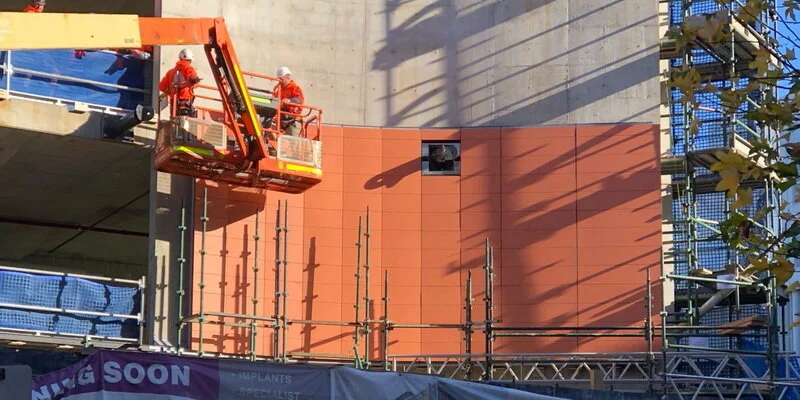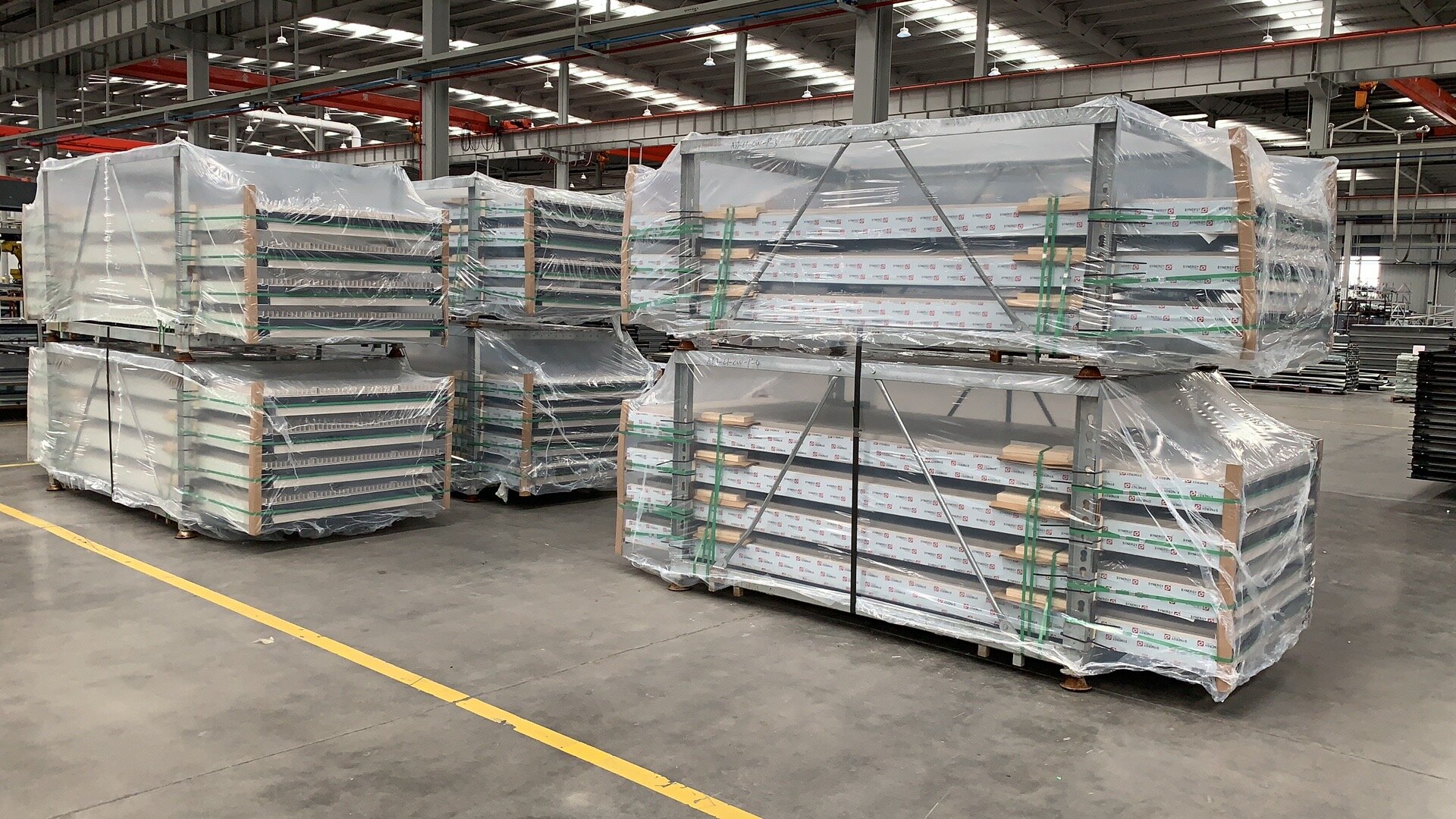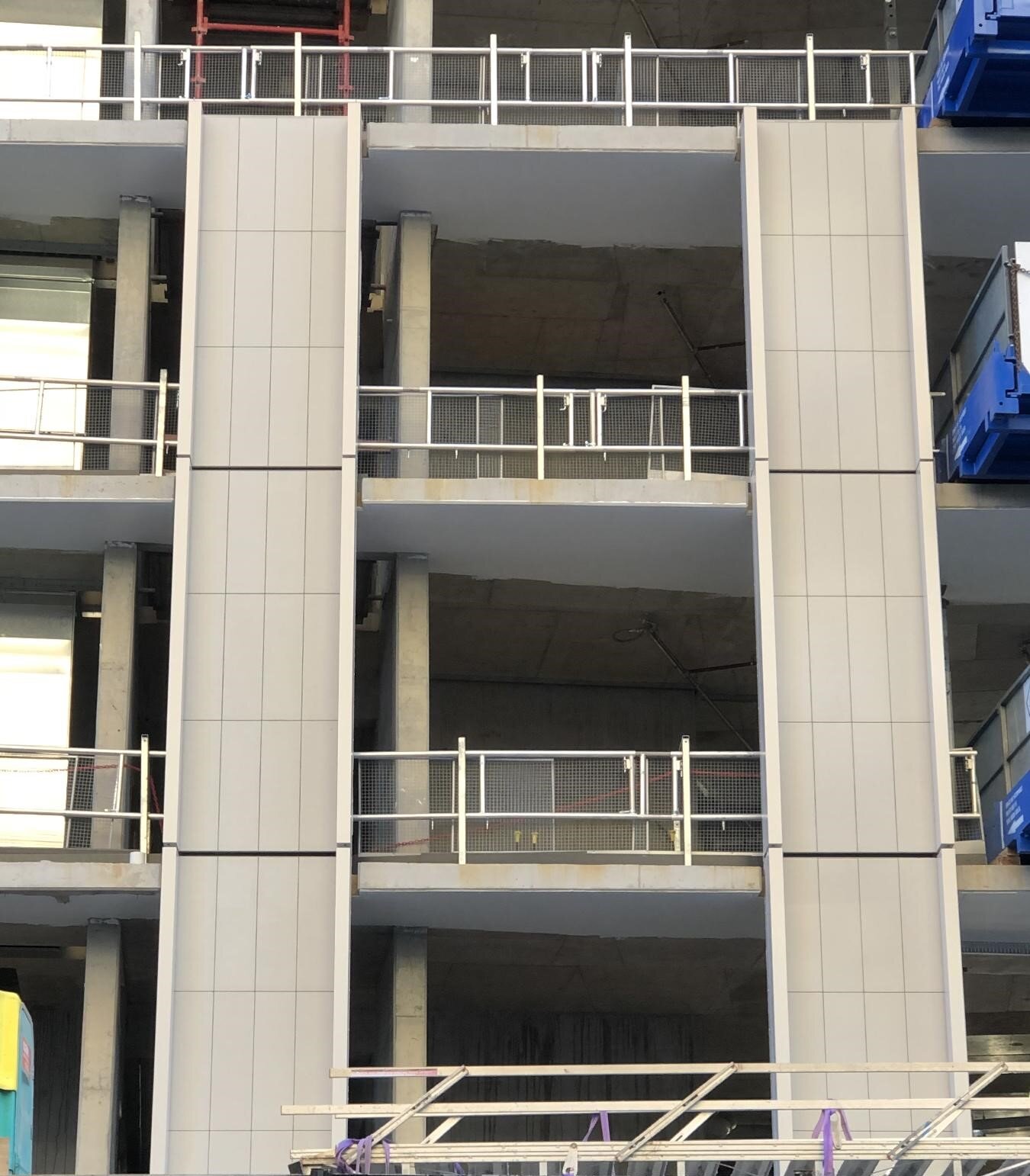Frontek porcelain cladding in Unitised systems
Frontek customised Canyon panels in a unitised system for Gentle Dental Care (Miranda, NSW) By Geoform
What is?
Curtain walls can be classified by their method of fabrication and installation into the following general categories: stick systems and unitized (also known as modular) systems.
Frontek unitised modules for University of Sydney
Support of Curtain Walls
Curtain wall systems must transfer back to floor structure or intermediate framing both their own dead load plus any live loads, which are most commonly positive and negative wind loads.
Frontek cladding systems have been tested by the European Organisation for Technical Assessment (EOTA) to withstand cyclonic configurations, making this system suitable for the 50km inland along Australia's western, northern and eastern tropical coastlines, which are areas of considered severity as C and D in the cyclonic chart.
It is also crucial to understand that the seismic load will also play a major role in this equation, especially in countries constantly affected by seismic activity such as New Zealand. IANZ tested our facade systems, obtaining the AS/NZS 4284:2008 certificate which endorses Frontek as a seismic-compliant solution.
Frontek porcelain panels are certified to meet AS 1530.1 by CSIRO as non-combustible and AS/NZS 4284:2008 by IANZ as seismic-compliant.
There will be movement differentials between the building structure and the facade envelope. To prevent any structural damage, the curtain wall connections must allow this movement while resisting the loads. Our panel's low expansion coefficients, thermal shock resistance and sizes accuracy match all the requirements for an ideal unitised modules configuration.
Advantages
Factory assembly achieves more reliable seals and a reduction in overall labour cost, these are some of the main advantages of unitised curtain wall systems.
Modules can be assembled and sealed in a factory while the structural frame of the building is being constructed, whereas stick systems require multiple steps to erect and seal the wall.
Modules ready for Archibald Bondi Junction at the facade contractor factory





